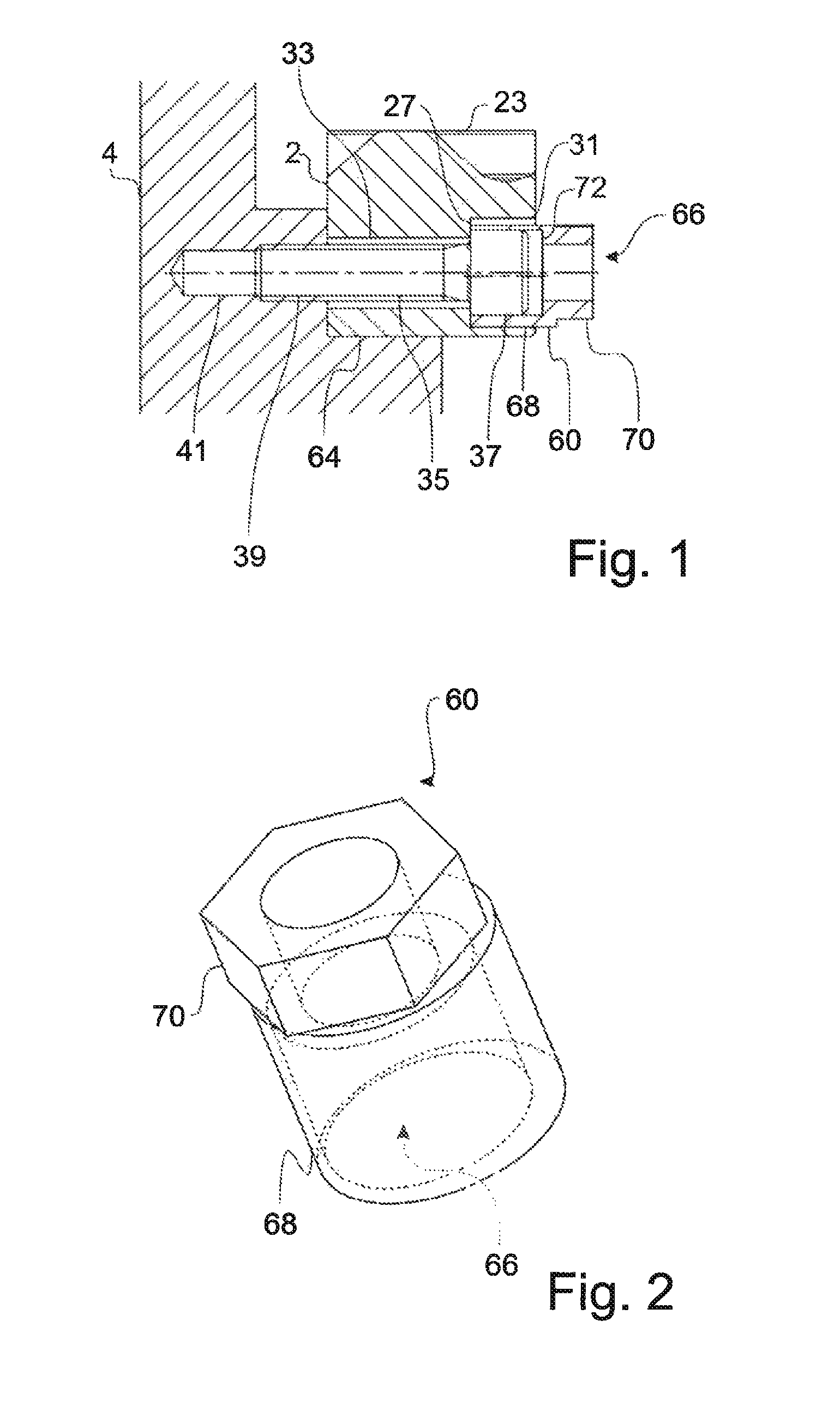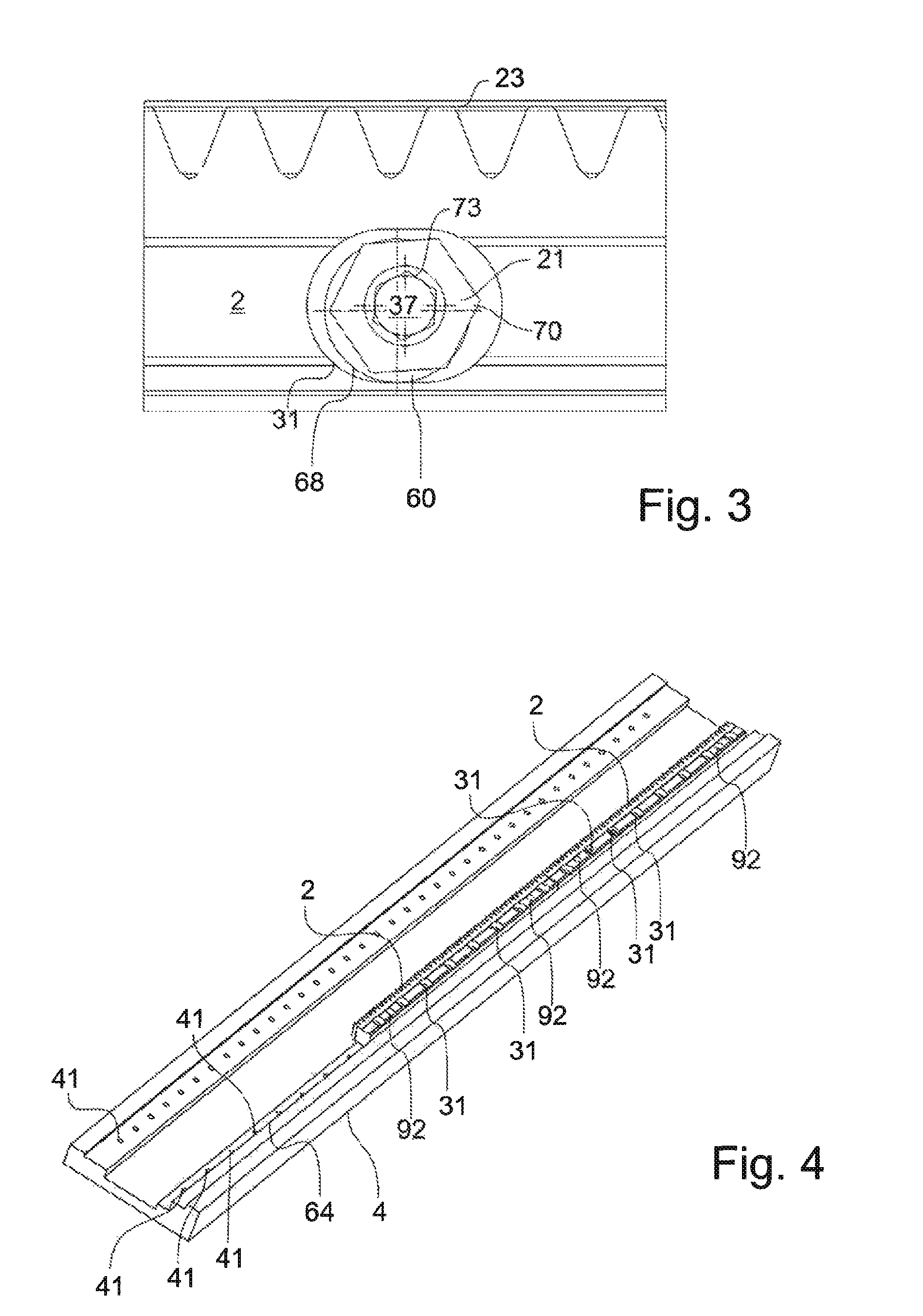Fastening system with eccentric
a technology of fastening system and eccentric, which is applied in the direction of threaded fasteners, screws, hoisting equipment, etc., can solve the problems of increased outlay, inconvenient tightening of screw clamps, and setting the distance between two toothed racks, so as to facilitate re-assembly, increase the rigidity of the connection, and facilitate the effect of re-assembly
- Summary
- Abstract
- Description
- Claims
- Application Information
AI Technical Summary
Benefits of technology
Problems solved by technology
Method used
Image
Examples
Embodiment Construction
[0031]Typical embodiments will be described below on the basis of the figures, wherein the invention is not restricted to the exemplary embodiments; the scope of the invention is rather defined by the claims. FIGS. 1-7 show typical embodiments or parts of typical embodiments. For the description of all of the figures, the same reference signs will be used for corresponding parts and will not be described repeatedly in conjunction with each individual figure. Some features or parts are identical in the various embodiments and will not be repeatedly explained in detail.
[0032]FIG. 1 shows, in a cross section, a cross section through an embodiment of a fastening system for the fastening of a linear machine element. In the embodiment of FIG. 1, a linear machine element 2 in the form of a toothed rack is provided.
[0033]The linear machine element 2 comprises a toothing 23 which is of oblique form. Also visible in the cross section of FIG. 1 is an opening which extends through the linear ma...
PUM
| Property | Measurement | Unit |
|---|---|---|
| diameter | aaaaa | aaaaa |
| diameter | aaaaa | aaaaa |
| diameter | aaaaa | aaaaa |
Abstract
Description
Claims
Application Information
 Login to View More
Login to View More - R&D
- Intellectual Property
- Life Sciences
- Materials
- Tech Scout
- Unparalleled Data Quality
- Higher Quality Content
- 60% Fewer Hallucinations
Browse by: Latest US Patents, China's latest patents, Technical Efficacy Thesaurus, Application Domain, Technology Topic, Popular Technical Reports.
© 2025 PatSnap. All rights reserved.Legal|Privacy policy|Modern Slavery Act Transparency Statement|Sitemap|About US| Contact US: help@patsnap.com



